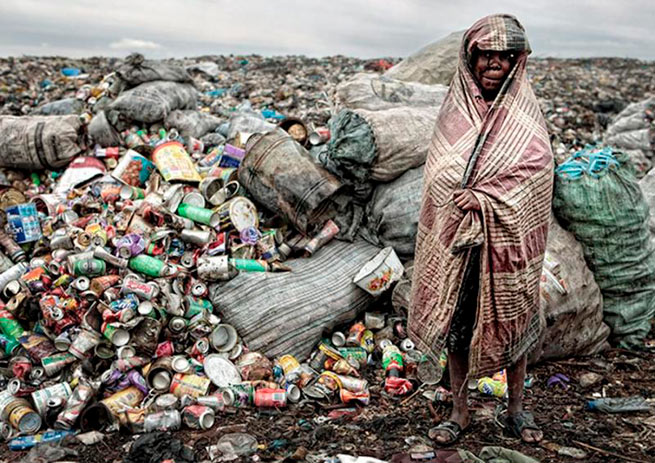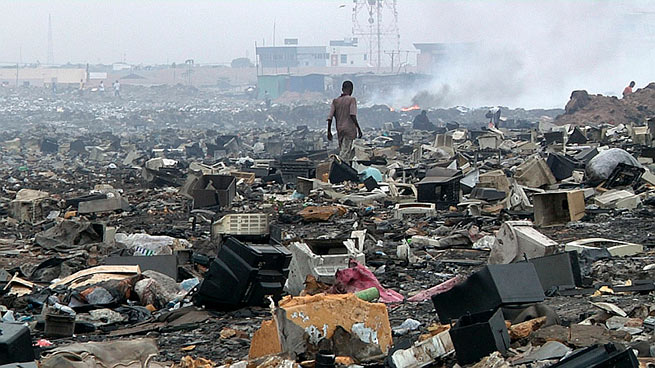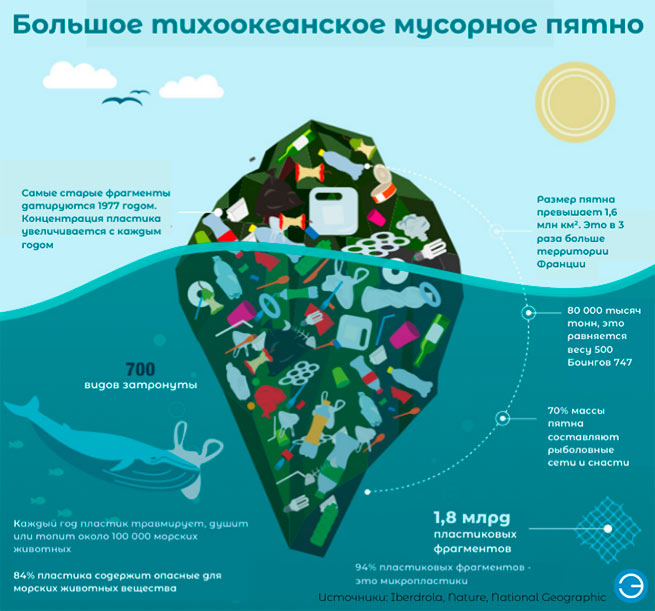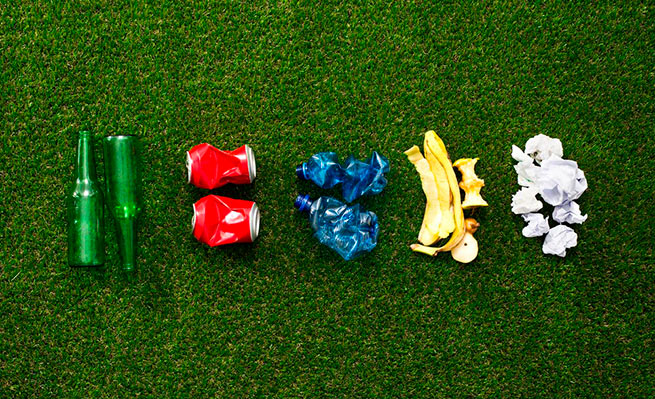The numbers are staggering: 2.12 billion tons of garbage and waste are thrown out on the planet every year. And if all this doesn’t sound alarming enough, the predictive models show something more alarming: we are still far from the peak of the waste production curve.
We will culminate and then stabilize – before or shortly after 2100. At this point we will be producing 100 million tons of garbage a day! This shocking number is partly due to the fact that 99% of the items we buy are thrown away after about six months.
Recent scientific data show that we are not dealing with statistical scenarios that computer models “think up”. Waste is already choking the planet, reaching even places that were previously considered “inaccessible”. Scientists have discovered high levels of plastic particles and debris in the Southern Ocean surrounding Antarctica, an area previously thought to be untouched by pollution.
Time bomb
A real time bomb from a combination of all types of waste and household garbage has been set in motion. Waste that ends up in landfills or is dumped into the oceans includes building and industrial materials, household waste, plastic and electronic waste, radioactive waste, sewage, and so-called “sewage waste”, i.e. fertilizers, pesticides, chemicals, oil. Landfilling waste, both treated and untreated, has become the standard way to “solve” the problem of waste management everywhere. If this approach is not changed immediately, experts warn, the time bomb will soon explode with incalculable consequences for life on the planet.
The consequences of free dumping and mismanagement of waste are frightening, from polluting farmland and introducing toxic chemicals into the food chain, to polluting the oceans and wiping out marine life. Thirteen million tons of plastic end up in the oceans every year. If this trend continues, then by 2050 the oceans will be oversaturated with plastic debris and microparticles. Worse still, air pollution from practices such as landfill burning is a cocktail of toxic chemicals, including the highly toxic dioxin. Water pollution is also another side effect of waste and disposal. It has been estimated that 280 billion tons of groundwater is polluted every year due to landfills and uncontrolled dumping of waste, i.e. 9000 tons every second!
Geography
Tons of waste are generated in the world every day, mainly due to the rapid expansion of cities and consumerism. Economists have studied the data and have shown that higher-income countries such as the US, Denmark and New Zealand generate at least twice as much waste per capita as developing countries. People with higher incomes not only consume more goods in general, but also use goods with a higher concentration of durable composite materials, such as cars, electrical appliances and electronic equipment. In addition, most of the waste in middle- and high-income countries consists of inorganic materials, mainly paper and plastic.

At the same time, while high-income countries generate more waste per capita in terms of total volume, it is developing countries that generate more than half of total solid waste. Most of these are made from biodegradable organic materials, but as income rises, their share is declining. The world’s highest rates of waste generation per person are found in developing island countries, where tourism plays a dominant role in the economy. The lack of free land in these countries for the creation of landfills for burial or disposal of waste makes the problem of handling them especially acute. As if that weren’t enough, rising sea levels from global warming are exacerbating the problem, planting an environmental time bomb here too.
The classic logic underlying any difficult management – “I don’t see a problem, so it doesn’t exist” – if it exacerbates the problem, it’s only for the better. In fact, landfills are at the heart of one of the biggest environmental problems of our time – methane gas emissions. Solid waste landfills are currently the third largest source of anthropogenic methane emissions in the US. In 2019, municipal solid waste accounted for 15% of America’s emissions of this gas, according to the Environmental Protection Agency. This amount is equivalent to the emissions of more than 20 million cars in a year!
Globally, municipal solid waste accounts for 11% of all methane emissions. This is largely due to food waste, which emits 8% of global greenhouse gas emissions. It should be noted that around the world, one third of all food produced ends up in landfill. And most of the world’s household waste ends up incinerated or accumulated in landfills. Effluent from there continues its destructive work in rivers, lakes, aquifers and seas.

The consequences of the pandemic
The coronavirus pandemic has only exacerbated the problem. Recycling rates have declined in Europe, Asia and the US. At the same time, the pandemic has produced a surplus of new waste from personal protective equipment and other disposable medical supplies. A study by the Proceedings of the National Academy of Sciences (PNAS) found that the pandemic has generated more than 8 million tons of plastic waste worldwide, and more than 25,000 tons of it has ended up in the seas. But shouldn’t we look beyond our own activities? Alas, many other established industries follow the same dead-end pattern: overproduction-overconsumption. One of them is the fashion industry. Approximately 92 million metric tons of textile waste are produced every year in the world! A booming industry is flooding the world’s markets with its products. Approximately 59,000 metric tons of clothes enter the port of Iquique in northern Chile each year, where dealers can buy some of the goods. The bulk, about 39,000 metric tons, is then dumped as waste in the Atacama Desert. About 85% of all textiles in the US end up in the trash. Every year, Americans throw away 12.8 million tons of textiles. Globally, the fashion sector is responsible for 10% of greenhouse gas emissions. Textile manufacturing emits 1.2 billion metric tons of greenhouse gases annually.
Changing Animal Behavior
Piles of garbage in landfills not only leave their toxic mark on the soil and in the air. They also have other effects, one of which, although not as well known, cannot be overlooked: the garbage affects the behavior of animals.
An article by Kate Nakamura in Global Citizen reports on the chaotic garbage problems facing Glasgow during the pandemic and the resulting increase in the rat population. Within five months, the rodents attacked four cleaning workers and led to their hospitalization. And while it’s true that “all cities have rats,” as Scottish City Council leader Susan Aitken said, it’s a fact that increased waste is attracting larger populations of rats and cleaners, thereby increasing the chances of unwanted “interactions” between rodents and humans.

In some cases, rodents that used to live off the abundance of food waste in the city have exhibited “abnormal behavior” as a result of social restrictions caused by the pandemic. For example, when restaurants closed and food supplies stopped, the rats in New York began to starve. Forbes reported that after outdoor eateries reopened, customers have experienced a new level of interaction with hungry rats looking for food. New Yorkers are no strangers to the sight of large rodents, as the city has the third-largest rat population in the US, but this time the situation is almost out of control. Conclusion: Human waste has a proven track record of influencing animal behavior.
A 2016 study by Movement Ecology found that white storks in Portugal have changed their migratory routes due to the abundance of food in landfill litter. In Argentina, waste from increased fishing caused a 37% increase in the gull population, leading to an increase in attacks on whales. In 30 years, the incidence of seagull attacks on whales has increased from 2% in the 1970s to 99% in the 2000s!
“Plastification”
Experts usually point out that there is more than one example of “plasticizing” the oceans. The so-called Great Pacific Garbage Patch, an “island” of floating plastic trash between California and Hawaii that spans three times the size of France, is now a “habitat” in its own right. Scientists have discovered that it has become a ridiculous “master” for a number of marine life, and no one knows how they got there. Over the years, its existence has become the most telling trace of environmental stress from plastic pollution, but it’s not the only garbage island floating in the oceans. According to the US National Oceanic and Atmospheric Administration (NOAA), there are at least two other areas where the rotational movement of ocean waters has created debris islands: one in the South Pacific and the other in the North Atlantic.
Meanwhile, the global trade in recyclable plastic seems to have stalled, causing another waste management crunch, mostly in the world’s wealthy countries. To make matters worse, the plastic recycling industry has a criminal history. The export of plastic creates associated risks. Increased regulation of this practice has led to reports of smuggling, illegal disposal methods, money laundering, corruption, and in some cases even allegations of human trafficking. A report by the Global Initiative Against Transnational Organized Crime (GITOC) showed a 280% increase in illegal plastic waste disposal worldwide in 2020. According to Global Citizen, the report cites the case of one of the largest UK waste disposal companies, accused in 2021 of smuggling 400 people from Poland to the UK to work as a waste sorter for just €0.50 an hour.

In 2018, China, the world’s largest plastic waste recycling manager, announced that it would stop imports from overseas. More than 180 countries have agreed to impose stricter rules on plastic exports to poor countries, but estimates in early 2021 showed that the US has increased the amount of plastic shipped outside its borders from 45 million tons the previous year to 48 million tons. A third of the recyclable waste in the US is sent abroad, while in the UK some of the recyclable waste is sent to countries such as Turkey, Poland and Malaysia. The US, UK, Canada, Ireland and Germany rely on China, Indonesia, Malaysia, Kenya, Vietnam and Turkey to recycle their growing volumes of plastic waste. But countries that are overwhelmed by these huge imports, or don’t have enough equipment to properly process them, often resort to the worst “solution” – incineration…







More Stories
Weather forecast: rain and storms in Athens and Thessaloniki on Saturday
Easter with… umbrellas: unstable weather in the coming days – where will it rain
Thodoris Kolidas explains the phenomenon "black sky" on Good Friday